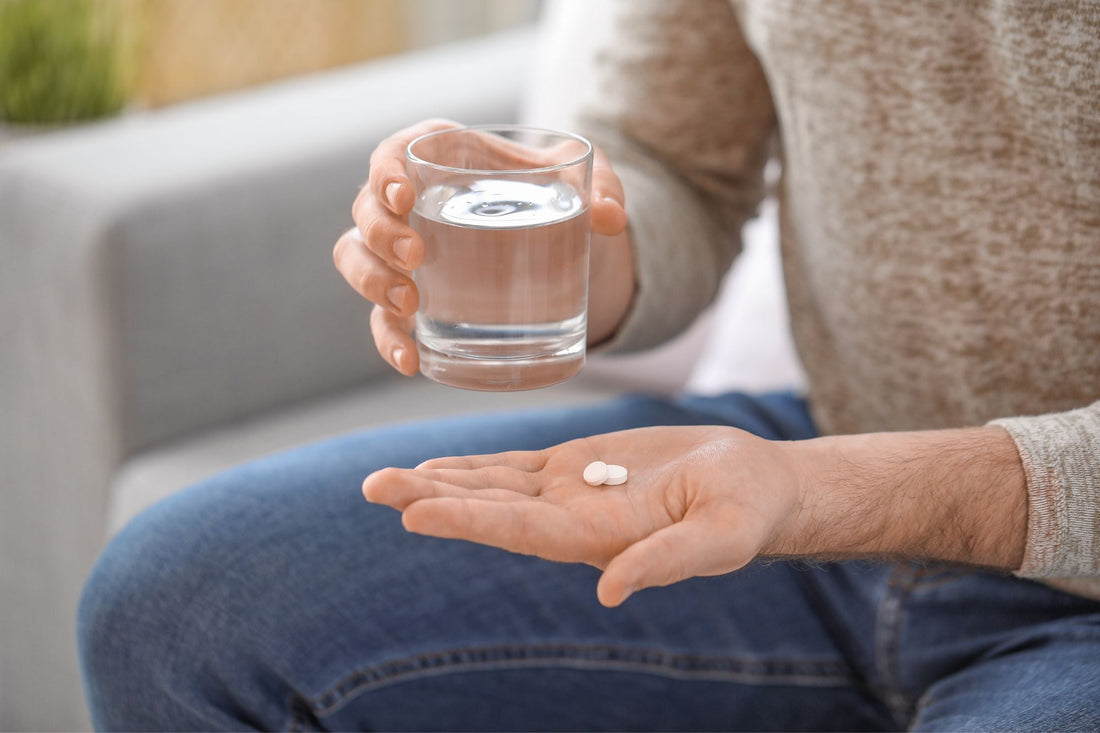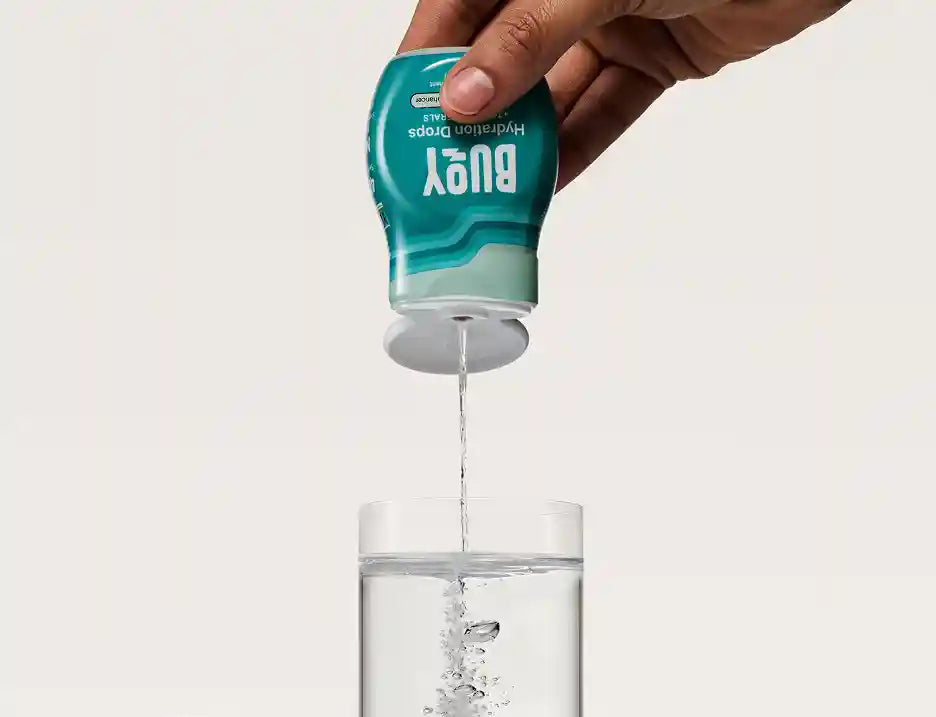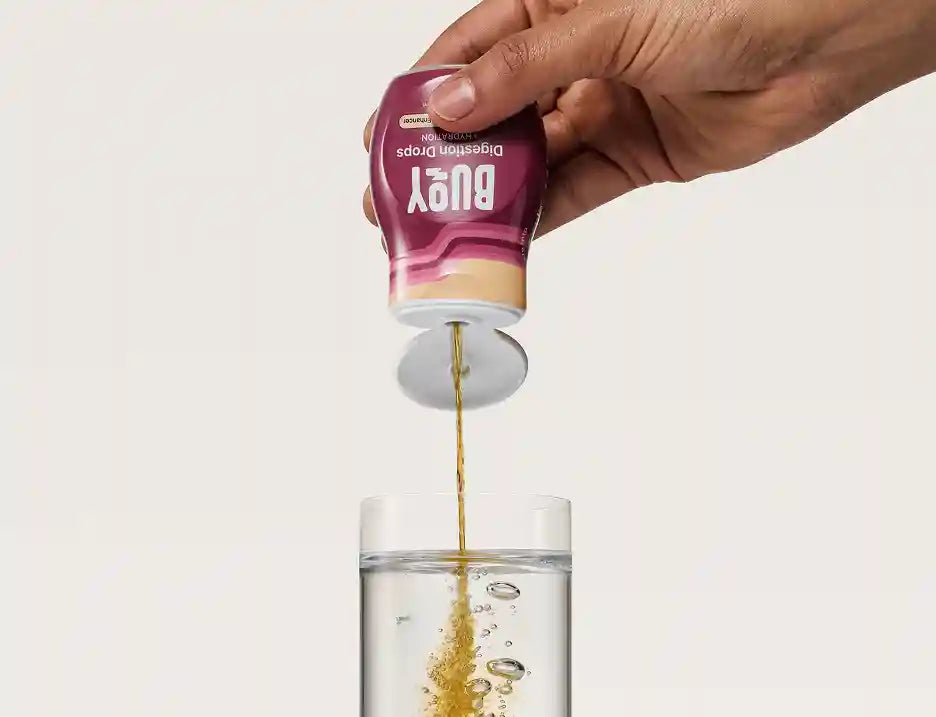
Mastering Medication for POTS: Your Essential Guide to Effective Management
Imagine waking up every day not knowing if you’ll have the energy to stand up without feeling dizzy or lightheaded. For millions of people living with POTS (that’s short for Postural Orthostatic Tachycardia Syndrome), this is their reality.
Living with POTS can present daily challenges, but there's hope. Proper medication can be a game-changer for reclaiming your life from POTS. But with numerous medications targeting different symptoms, how do you choose the right ones for your treatment plan?
That’s what we’ll be discussing today in our comprehensive guide to managing POTS medication.
Essential Takeaways:
- Having a Personalized Medication Plan: Treating POTS isn’t one-size-fits-all. Work closely with your healthcare provider to develop a personalized medication plan tailored to your specific symptoms and needs. Regular follow-ups and open communication about medication effectiveness and side effects will help you and your doctor optimize your POTS treatment plan over time.
- Balancing Medications with Lifestyle Changes: While medications are often essential in managing POTS, they work best when combined with lifestyle modifications. Embracing a holistic approach that includes proper hydration, a balanced diet, appropriate exercise, and stress management techniques alongside your medication schedule can make all the difference in treating this condition.
We'll explore the medications available for treating POTS, their potential side effects, and how to work with your healthcare provider to find the best options for you.
Are you ready to learn all about medication for POTS? Let’s go!
- Common Medications Prescribed for POTS
- Creating and Managing Your Medication Schedule
- Understanding and Managing Side Effects
- Combining Medications with Lifestyle Changes
- Tips for Communicating with Your Healthcare Provider
- Master Your Medication Routine for Better POTS Management
Common Medications Prescribed for POTS
POTS is a complex condition that’s typically managed by a combination of lifestyle changes and medications, if required. For many individuals with POTS, treatment often involves taking more than one medication to target the various symptoms POTS can cause.
Here are some of the more commonly prescribed medications.
Fludrocortisone
Fludrocortisone is a steroid that helps increase blood volume and blood pressure by causing the body to retain sodium and water. It can help reduce dizziness and fainting by stabilizing blood pressure.
Beta-Blockers
Beta-blockers, such as Propranolol, reduce the heart rate and the force of the heartbeat, which can help manage classic POTS symptoms like rapid heart rate and palpitations. They can help control tachycardia and improve overall heart function.
Midodrine
This medication works by constricting blood vessels, which helps increase blood pressure, treating common POTS symptoms like dizziness and fainting.
Ivabradine
This POTS medicine slows the heart rate without affecting blood pressure. It helps manage tachycardia, especially in patients who cannot tolerate beta-blockers.
Pyridostigmine
Pyridostigmine enhances communication between nerves and muscles by inhibiting the breakdown of acetylcholine. This medicine helps improve muscle strength and reduce fatigue.
Individualized Treatment Approaches
It’s important to note that everyone’s experience with POTS are unique, and medication responses can vary significantly. What works well for one person may not be as effective for another. That’s why you need to work closely with your healthcare provider to find the right combination for you.
Some patients may benefit from a combination of these medications, while others might find relief with just one. Your doctor will consider your specific symptoms, overall health, and potential drug interactions when developing your POTS treatment plan (1,2,3).
Curious about what other POTS treatments are out there? Check out our guide to Advanced Treatments for POTS: Exploring Cutting-Edge Options.
Creating and Managing Your Medication Schedule
Establishing a consistent medication schedule for POTS is important for managing your symptoms effectively. Here are some tips to help you stay on track:
- Make a List: Create a POTS medication list detailing all the medications you take, including dosages and times. Keep this list with you when you’re on the go in case of emergency, and be sure to update it regularly to ensure it stays accurate.
- Use a Pill Organizer: Sort your medications for the week to avoid confusion and missed doses.
- Set Reminders: Use smartphone apps or alarms to alert you when it’s time to take your medicine.
- Link Medications to Daily Activities: Associate taking your medication with routine activities like brushing your teeth or eating breakfast.
- Keep a Medication Diary: Record when you take your medications, any side effects you experience, and whether they’re effective in treating your POTS symptoms.
- Plan for Refills: Set reminders to refill your prescriptions before you run out.
Creating and sticking to a medication schedule can make a huge difference in treating your POTS symptoms. Remember, consistency is key, but with these strategies, you shouldn’t have any trouble managing your POTS medication.

Using a pill organizer can help you manage your POTS medication schedule, reducing missed doses and improving symptom management.
Understanding and Managing Side Effects
While medications can significantly improve your POTS symptoms, they may also come with some side effects. Here are some of the more common POTS drug side effects and how to manage them:
- Dizziness: If you experience dizziness, make sure you’re staying hydrated and avoid sudden changes in position.
- Nausea: Taking medications with food or as directed by your healthcare provider can help reduce or even eliminate nausea.
- Fatigue: Balance rest and activity, and consider adjusting your medication timing under your doctor’s supervision. For example, you may want to take a medicine that makes you tired at night before bed to reduce side effects during the day.
- Headaches: Stay hydrated, manage stress, and use over-the-counter pain relief if advised by your doctor.
- Dry Mouth: For dry mouth, it’s important to stay hydrated and use sugar-free gum or lozenges to stimulate saliva production. If it leads to dental problems or difficulty swallowing, seek advice from your doctor or dentist for treatment.
- Insomnia: Establish a consistent sleep routine and discuss possible medication adjustments with your healthcare provider if necessary (3).
Managing these side effects can help you maintain a better quality of life while treating your POTS symptoms. Always consult with your healthcare team for personalized advice.
Combining Medications with Lifestyle Changes
While medications play an important role in your POTS treatment plan, they work best when combined with lifestyle modifications. Here’s how you can create a holistic approach to managing your POTS symptoms:
Diet and Hydration
Diet is another important part of your POTS treatment plan. A healthy diet can help you stabilize your blood pressure and reduce symptoms. Here are some dietary tips to try:
- Eat Small, Frequent Meals: Consuming smaller, more frequent meals can help you maintain steady blood sugar levels and reduce symptom flare-ups.
- Stay Hydrated: When you have POTS, it’s essential to stay hydrated throughout the day, not just at mealtimes. Drinking water regularly helps manage blood volume and pressure. Aim for around 8-12 cups (68 to 101 fluid ounces) daily.
- Avoid Triggers: Limit or avoid potential triggers like alcohol and caffeine, as these can worsen symptoms in some patients.
For your meals, add a pinch of Rescue Salt to your food or directly onto your tongue to maintain hydration and electrolyte balance.
Why is salt so important? POTS patients often need to supplement with high-quality salt because it helps increase blood volume and improve blood pressure regulation, which can reduce POTS symptoms like dizziness and fatigue.
Make Hydration Even Easier
Add a squeeze of Buoy’s new Rescue Drops to the drinks you already enjoy every day for a powerful electrolyte boost you can feel. Formulated for POTS with 6x the electrolytes and minerals of our Hydration Drops, they are designed to help you maintain optimal hydration, even with challenging conditions like POTS.
Learn how to eat for managing your POTS symptoms with our POTS Diet and Nutrition Guide.
Exercise
You might not feel much like exercising when you have POTS, but it can help improve your symptoms over time. Start slowly with recumbent exercises, like swimming, using a recumbent bike, or rowing, then gradually progress to upright exercises.
Consider working with a physical therapist familiar with POTS to create a safe, and effective exercise routine.
Compression Garments
Wearing compression garments can help improve blood flow and reduce blood pooling in the legs. Options include compression socks, waist-high compression stockings, abdominal binders, and full-body compression suits for severe cases.
Stress Management
Stress can exacerbate POTS symptoms, so adding stress-reduction techniques to your daily routine is crucial. Practice deep breathing exercises or meditation, try gentle yoga or tai chi, and consider cognitive-behavioral therapy to develop coping strategies.
By combining these lifestyle changes with your POTS drug management, you can create a comprehensive POTS treatment plan that works for you. Remember to consult with your healthcare provider before making any big changes to your diet or salt intake, since individual needs can be different for everyone (1,4,5).

Placing a pinch of high-quality sea salt like Buoy’s Rescue Salt directly on your tongue is a quick and easy way to manage your POTS symptoms at home or on the go.
Tips for Communicating with Your Healthcare Provider
Communicating effectively with your healthcare provider is key to optimizing your POTS treatment. Here are some tips to make the most of your appointments:
- Keep a Symptom Journal: Write down your symptoms, medication effects, and any side effects to provide a clear picture of your condition.
- Prepare Questions in Advance: Write down any concerns or questions you have about your medications or treatment plan.
- Be Honest About Medications: If you’re struggling to take medications as prescribed, let your doctor know. They can help you find solutions.
- Discuss Lifestyle Factors: Share information about your diet, exercise routine, and stress levels to help your provider understand your overall health.
- Ask About Adjustments: If you feel your current medication isn’t working well, don’t hesitate to discuss potential changes or alternatives.
By following these tips, you’ll be ready to discuss your symptoms, concerns, and treatment options. This collaborative approach can lead to more personalized care and improved outcomes in your POTS management journey.
Questions to Ask Your Doctor About POTS Medications
Are you struggling to come up with questions to ask your doctor? Here are some of our favorites:
- How long should it take to see improvements from this medication?
- Are there any foods, drinks, or activities I should avoid while taking this medication?
- What should I do if I miss a dose?
- Are there any long-term side effects I should know about?
- How does this medication interact with my other medications or supplements?
Remember, you and your healthcare provider are a team. Open, honest communication is essential for developing an effective POTS management plan. Don’t hesitate to advocate for yourself and ask questions – your active participation is key to finding the best medication and lifestyle strategies for you.
Still struggling to work with your healthcare team? Find out How to Create a POTS Management Plan for further guidance.
Master Your Medication Routine for Better POTS Management
Managing POTS often requires a holistic approach, combining medication with lifestyle changes for the best outcomes. By understanding your medications, creating a consistent routine, managing side effects, and maintaining open communication with your healthcare team, you’re taking important steps toward mastering your POTS management.
Find the Right Balance for You
Remember, every POTS journey is unique, and finding the right balance may take time and patience. Don’t get discouraged if you don’t see immediate results—keep working with your healthcare provider to fine-tune your POTS treatment plan. Your perseverance will pay off.
Upgrade Your POTS Treatment Plan Today
Are you ready to take your POTS management to the next level? Explore our POTS guides for more expert advice on managing your POTS symptoms and improving your daily life. And don’t forget to check out Buoy’s electrolyte and mineral solutions, designed to support optimal hydration, which is crucial when you have POTS.
Your path to better health starts here. Embrace these strategies, stay informed, and keep pushing forward. With the right tools and knowledge, you can thrive despite POTS.

Boost your hydration with Buoy Rescue Drops – each squeeze packs more electrolytes than a sports drink! Use 4-7 times daily for optimal hydration and increased bioavailability.
References:
- Cleveland Clinic. (2022). Postural Orthostatic Tachycardia Syndrome (POTS). Retrieved from https://my.clevelandclinic.org/health/diseases/16560-postural-orthostatic-tachycardia-syndrome-pots
- Dysautonomia International. (n.d.). Postural Orthostatic Tachycardia Syndrome. Retrieved from https://www.dysautonomiainternational.org/page.php?ID=30#
- Standing Up to POTS. (n.d.). Medications for POTS. Retrieved from https://www.standinguptopots.org/resources/medicine
- Standing Up to POTS. (n.d.). Lifestyle Modifications. Retrieved from https://www.standinguptopots.org/POTSlifestylemodifications#
- Dysautonomia International. (n.d.). Lifestyle Adaptations for POTS. Retrieved from https://www.dysautonomiainternational.org/page.php?ID=44




